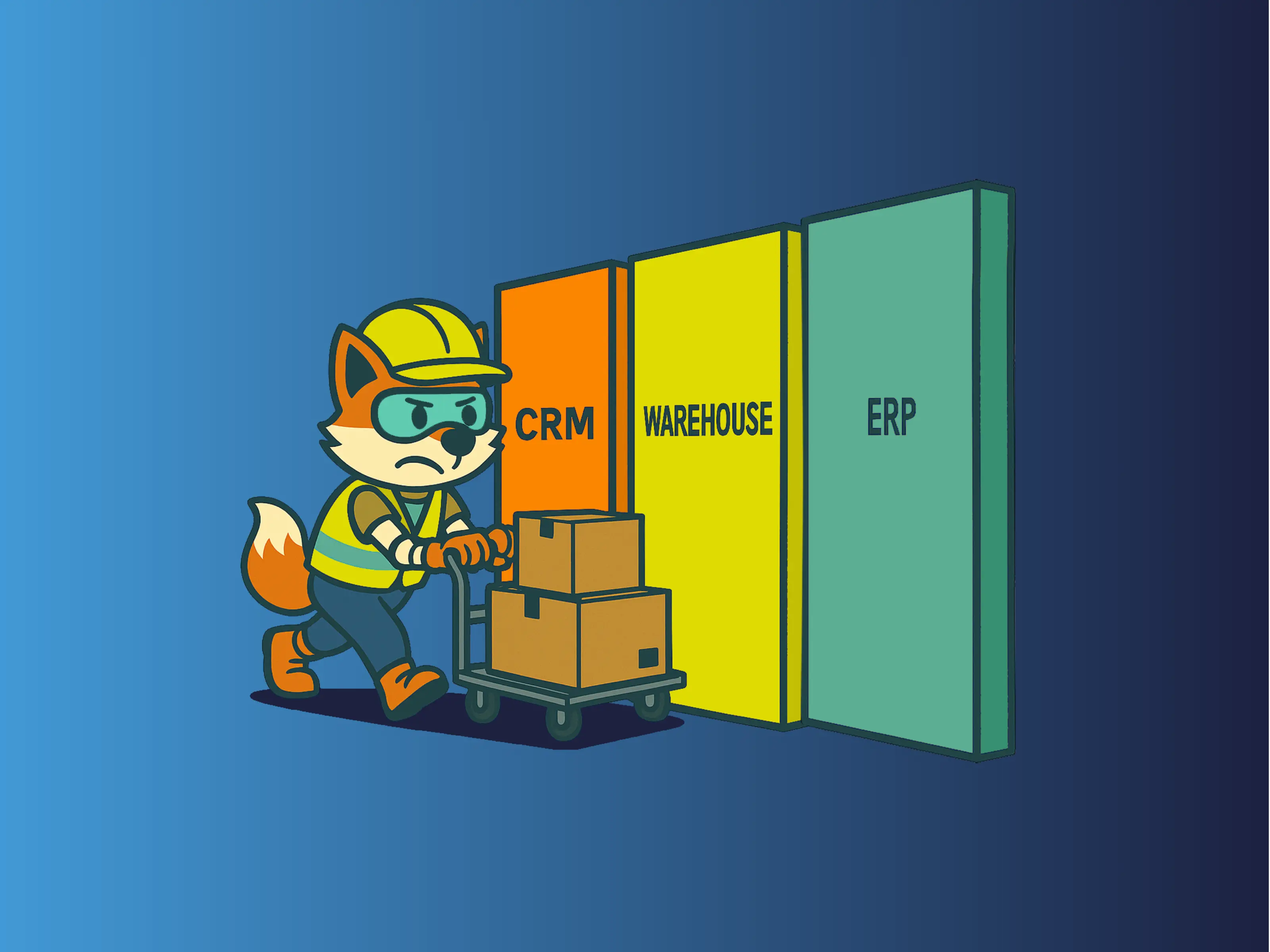How to Choose a Future-Ready CRM for Distribution and 3PL Teams in 2026
Choosing a CRM for logistics and 3PL operations in 2026 means more than tracking customers. It means connecting people, processes, and partners across provinces. Here’s what to look for, and why Canadian context matters.
From freight giants to regional 3PLs, everyone’s fighting the same battle
Across Canada, logistics and 3PL leaders are navigating a perfect storm of rising customer expectations, shrinking margins, and fragmented systems. Sales teams work one way, operations another, and data lives in too many places: from Excel to ERPs to freight platforms, that don’t talk to CRMs.
The result is predictable: duplicate work, poor visibility, and a constant gap between what customers expect and what systems deliver.
But the issue isn’t a lack of tools. It’s a lack of connection. That’s where CRM readiness becomes the new advantage.
What 3PLs Need From a CRM
Logistics CRMs can’t behave like traditional sales CRMs. They need to blend operational visibility with customer context seamlessly.
Here’s what leading logistics and 3PL teams say they need most:
- Unified visibility between sales, operations, and dispatch.
- Real-time operational context
- Quote-to-invoice continuity, so data doesn’t vanish between systems.
- Multi-department, multi-location handling, with a central hub for pricing, quoting, and reporting.
- Fast time-to-value, and not a multi month rollout with extensive training sessions
- Adoption-first design, so field reps and coordinators actually use it daily.
- Canadian alignment for bilingual operations, data residency, and compliance with PIPEDA and Law 25.
TL;DR: 3PLs need a CRM that acts as a connected command center that reflects how logistics teams really work.
The 2026 CRM Landscape
We reviewed the leading CRMs logistics teams rely on: HubSpot, Zoho, Salesforce, Method, Magaya, and Cone CRM.
The findings show a clear pattern: Most CRMs solve part of the problem, but few align with how logistics teams actually operate.
- Marketing-First CRMs
Platforms like HubSpot and Zoho excel at sales and marketing automation.
They make selling easier, but struggle to bridge into ERP, dispatch, or warehouse systems. Integrations exist, but logistics logic doesn’t.
- Enterprise CRMs
Salesforce leads in customization and scalability, but complexity and cost keep it out of reach for mid-sized 3PLs. It’s powerful, but not practical for most Canadian operators, not to mention their less than user-friendly mobile app.
- Accounting-Linked CRMs
Tools like Method shine for QuickBooks users. They keep finance connected, though they lack logistics intelligence, forcing dispatch or warehouse data into separate silos.
- Freight Platforms with CRM Layers
Magaya delivers excellent freight workflows but becomes too heavy for SMB 3PLs. It’s built for freight-forwarding giants, not multi-location distributors or hybrid operations.
- Adoption-First CRMs
A new category is emerging: CRMs like Cone CRM, designed specifically for distributors and 3PLs.
They combine logistics workflows, Canadian compliance, and human-first design to eliminate training barriers and manual work.
Our takeaway: Where others optimize for marketing or enterprise scale, the future belongs to systems that optimize for adoption, visibility, and connection, not to forget....
The Canadian Gap
Global CRMs weren’t built for Canada’s reality.
Bilingual teams, multi-province operations, and compliance obligations under PIPEDA and Law 25 require systems that manage not just data — but accountability.
Yet among major players, few even mention Canada-based hosting or bilingual interfaces. For distributors and 3PLs operating nationally, this gap creates unnecessary risk and friction.
The next generation of CRMs must reflect the Canadian operational landscape:
- Data hosted securely within Canada.
- French-English interfaces out of the box.
- Alignment with local data privacy regulations.
- Partner support from teams that understand Canadian logistics.
Because compliance isn’t optional — it’s part of how you win trust and scale sustainably.
How to Evaluate a Logistics CRM Partner
The right CRM partner doesn’t just sell software: they strengthen your operations.
Ask these 10 questions before you commit:
- Can your CRM integrate with your ERP, WMS, or dispatch systems?
- Does it show quotes, orders, and shipments on one timeline?
- Can it handle multiple departments, locations, and currencies?
- Is data residency clearly stated (and compliant with PIPEDA / Law 25)?
- Can field reps easily access key data on mobile, while on the road?
- Do implementation and training take months?
- Do users log in daily after 60 days?
- Does the provider offer local support, in your preferred language, during your work hours?
- Is forecasting tied to real operational data, and not just sales metrics?
- Is the provider acting as a partner, and not just a vendor?
If most of your answers are “no,” your CRM may be holding your growth hostage.
The Future: When CRMs Disappear Into the Workflow
In 2026, the best CRMs should not feel like traditional, heavy CRMs.
They should automate the admin, surface insights automatically, and unify what’s happening across your lanes, warehouses, and customer interactions.
As AI and automation mature, logistics leaders will expect systems that simplify, and not complicate, their operations.
The future of logistics is better-connected technology, that teams actually use.
FAQ
1. What is a logistics CRM?
It’s a customer management platform built for operational visibility: connecting sales, logistics, and finance data into one shared view.
2. How does CRM adoption affect profitability?
Higher adoption leads to fewer errors, faster quoting, and better forecasting. In logistics, where rekeying and delays cost margin, adoption equals ROI.
3. Why do Canadian 3PLs need local data hosting?
Because PIPEDA and Law 25 require transparent data handling. Hosting CRM data in Canada improves compliance and speeds up performance.
4. Can small 3PLs afford modern CRMs?
Yes. New adoption-first CRMs are built for teams with 10–250 employees, offering fast setup, prebuilt logistics workflows, and bilingual support.
5. How can I future-proof my CRM investment for 2026?
Choose a system that prioritizes connection between people, data, and systems. Start with visibility; scalability will follow.



.webp)

%20A%20CRM%20Tale%20of%20Data%2C%20Drama%2C%20and%20Duct%20Tape%20Privacy.png)

.png)